Markings that may date back to the 15th century and were meant to ward off witches, demons, and the evil eye were found on the walls of Gainsborough Old Hall in Lincolnshire, England.
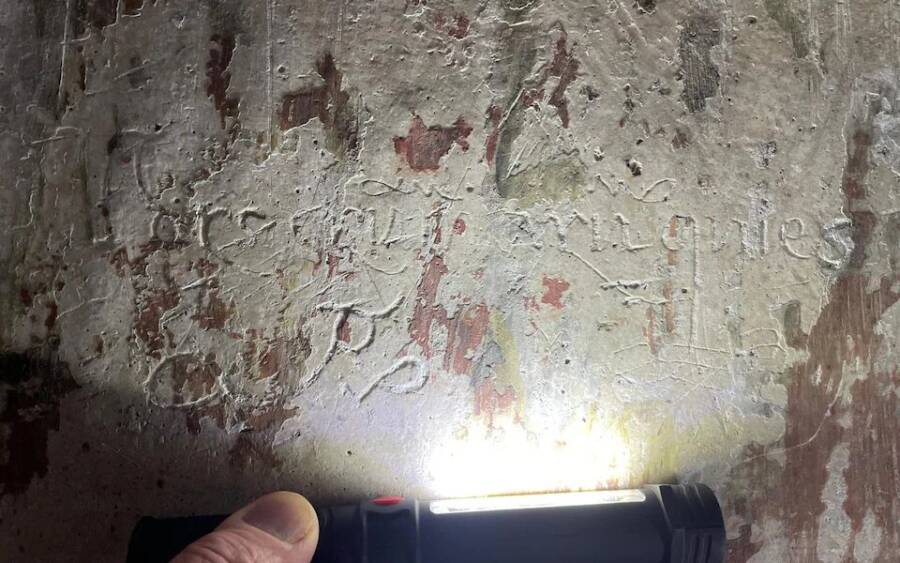
English HeritageSome of the text and symbols discovered on the walls of Gainsborough Old Hall.
Gainsborough Old Hall, a historic Tudor manor in Lincolnshire, England, has a rich past dating back to the 15th century, and hosted famous figures like King Richard III and Henry VIII and his wife Catherine Howard. The manor came under the ownership of merchant William Hickman in 1596, and since then, it’s kept its medieval and Tudor charm remarkably intact.
Recently, a volunteer at the hall, Rick Berry, stumbled upon unusual symbols etched into the walls, believed to be “witch marks” designed to protect the home from evil spirits. Most of these marks include unique designs like hexafoils, overlapping “V” shapes honoring the Virgin Mary, and burn marks.
One marking even features Hickman’s name etched upside down, suggesting that it was a curse. Hickman wasn’t exactly popular in his day, leading historians to believe that servants may have used these witch marks to both protect themselves from his bad reputation and to guard against threats from the community.
Experts from English Heritage are now digging deeper into these mysterious carvings, hoping to piece together the hall’s intriguing history.
Inside The History And Alleged Haunting Of Gainsborough Old Hall
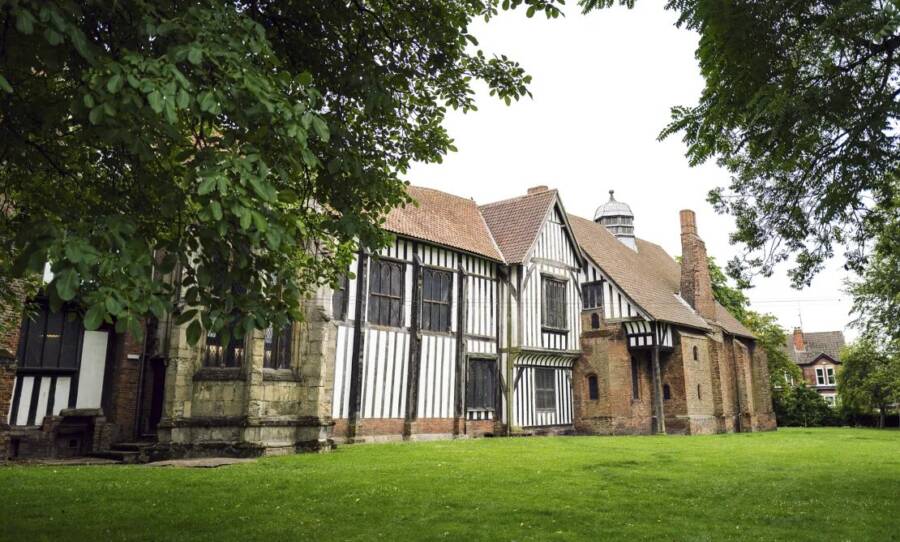
English HeritageGainsborough Old Hall in Lincolnshire, England, where the markings were discovered.
Gainsborough Old Hall was first built in 1460 by Sir Thomas Burgh. The Burgh family was wealthy and powerful and wanted an impressive family home that would demonstrate their high status.
In its early days, the manor welcomed several esteemed guests, including King Richard III and Henry VIII. Meanwhile, an alleged haunting took root at Gainsborough Old Hall after the daughter of Sir Thomas Burgh II died of a broken heart because her father forbade her from marrying her one true love. Her spirit, known as the “Grey Lady,” is said to walk the halls to this day.
The house continued to be an important fixture in high society until 1596, when it was sold to a merchant named William Hickman.
In 1730, the home’s occupants moved out, leaving it empty for the first time since its construction. Because it has gone without renovations since the early 18th century, the home is somewhat frozen in time. Centuries later, the manor continues to exemplify the quintessential medieval kitchen and features the signature timber framing of the Tudor period.
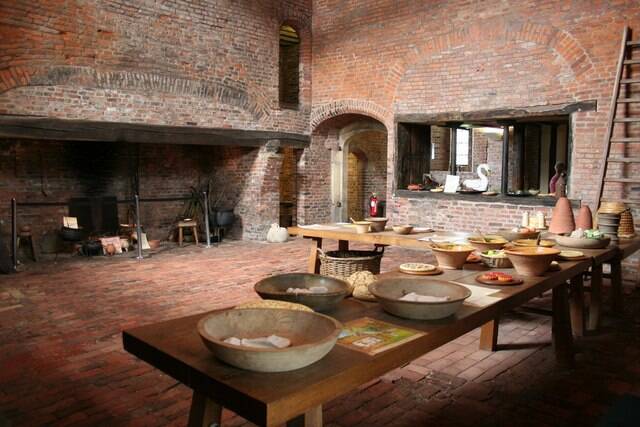
Richard Croft/CC BY-SA 2.0The medieval kitchen inside Gainsborough Old Hall.
“Gainsborough Old Hall is a building that reflects over five hundred years of history in its walls. From paupers to princes the history of an English market town can be read through the hall’s development,” according to English Heritage.
However, markings recently discovered on the manor’s walls reveal a new side of the history of Gainsborough Old Hall — one filled with superstition and witchcraft.
A Volunteer Finds A Staggering Amount Of Witches’ Marks On The Mansion’s Walls
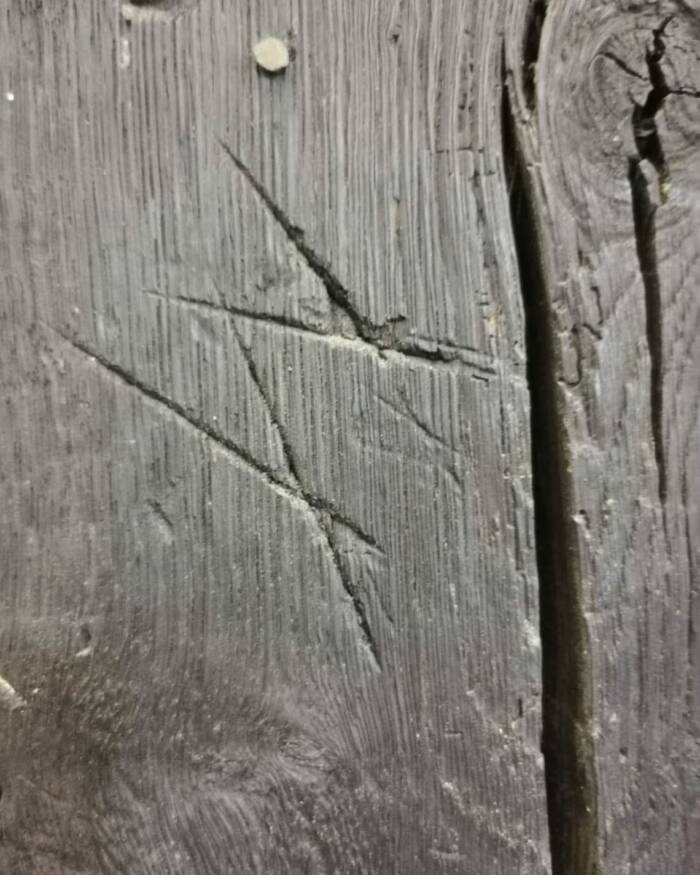
English HeritageOverlapping Vs found at the manor that are believed to be a call for protection from the Virgin Mary.
A few years ago, a volunteer at Gainsborough Old Hall named Rick Berry discovered something odd. Etched into the walls of the manor were suspicious marks and inscriptions.
“I have been working as an English Heritage volunteer at Gainsborough for nearly 20 years and I know this property extremely well. So I was astonished when I noticed a previously undocumented protection mark a couple of years ago. I decided to see if I could spot any more and I just keep finding them. The last one was a small pentagram and that was a few weeks ago, but who knows how many more there are still to find,” Berry told CNN.
Most of the marks were concentrated in the servants’ quarters, but the rest were dispersed around the manor. These etchings included six-petal designs called hexafoils meant to trap demons, overlapping letter Vs called Marian marks, and burn marks.
Historians believe that these etchings were “witch marks,” or symbols meant to expel evil and provide protection to buildings and their residents. Several of these “witch marks” have been found at other historical sites in England, but nowhere else has as many as Gainsborough Old Hall.
Furthermore, Gainsborough Old Hall is the only site where curse inscriptions have been found. Historians are currently working to translate these etchings, but one inscription is clear as day: an upside down etching of William Hickman’s name. Dating back to the Roman and Anglo-Saxon period, defacing someone’s name in this way is widely believed to be a type of curse, wishing ill on the individual.
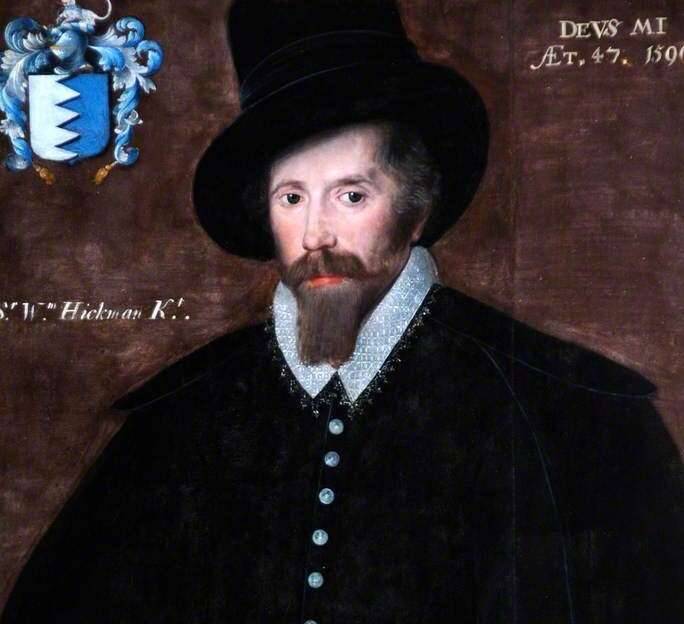
The Picture Art Collection William Hickman, the former owner of Gainsborough Old Hall.
According to English Heritage, Hickman was not a well-liked and kind man. Hickman closed areas of common land, fought against local market rights, implemented tolls on goods coming down the river, and wanted to flood the local market with goods from London.
“The Old Hall has undoubtedly had a tumultuous past, not least under the ownership of the apparently unpopular William Hickman, but why it’s the scene of quite such a high concentration of protective carvings remains a mystery,” said Kevin Booth, head of collections at English Heritage.
It is possible that many of the “witch marks” originate from the time period when William Hickman resided at the home. Servants, knowing Hickman’s reputation, may have cursed their employer while also protecting the house from those who undoubtedly wanted to inflict harm on Hickman and his residence.
However, much about the mysterious markings at Gainsborough Old Hall remains unknown to this day.
After reading about the witch marks, dive into seven bizarre witch tests that were almost impossible to beat. Then, read about six theories concerning the cause of the Salem Witch Trials.





